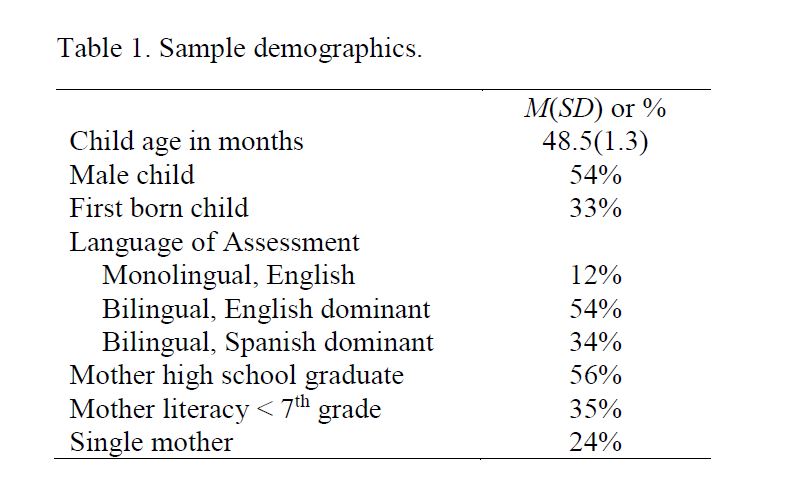Developmental and Behavioral Pediatrics
Session: Developmental and Behavioral Pediatrics 3: Screening
424 - Testing Theory of Mind in Latinx Children from Low-Income Homes
Friday, May 3, 2024
5:15 PM - 7:15 PM ET
Poster Number: 424
Publication Number: 424.603
Publication Number: 424.603
- ER
Erin Roby, PhD (she/her/hers)
Assistant Professor
NYU Grossman School of Medicine
Hawthorne, New Jersey, United States
Presenting Author(s)
Background: Theory of mind (ToM), the understanding that others have and act upon underlying mental states (thoughts, feelings), is a central predictor of school readiness and a key indicator of developmental disabilities that involve challenges in social interactions (e.g., autism). To date, research on the development of ToM has primarily focused on samples of White, Monolingual English-speaking children from high socioeconomic (SES) backgrounds. Limited study of ToM in ethnic minority children from low-SES homes, who are already at risk for disparities in diagnosis and treatment for disabilities like autism, is therefore a potential contributor to inequity.
Objective: We sought to characterize ToM in a low-SES Latinx population of preschool-aged bilingual children and to examine common correlates of ToM that have been established in prior research with higher-SES populations.
Design/Methods: Participants: 65 mother-child dyads from a larger longitudinal study, Smart Beginnings an RCT of a tiered intervention (universal Video Interaction Project, targeted Family Check-Up) that promotes positive parenting practices (Table 1). Assessment at 48m: Outcome variable: ToM (standard ToM task [Sally Anne], adapted to allow exploration of variation in timing of developmental transitions that occur between ages 4-5. Possible scores ranged between 0 [fully incorrect] to 1 [fully correct]). Predictor variables: language dominance (English vs. Spanish, age, receptive vocabulary (ROWPVT); executive functioning (Dimensional Change Card Sort [DCCS]).
Results: On average, children’s scores fell between 0 and 1 on the adapted ToM task (M = .54, SD = .34), which did not differ from chance (t = .87, p = .19). Bilingual children did not differ in their performance as a function of language dominance. Children’s ToM performance did not correlate with measures (ROWPVT, DCCS) that have consistently been shown to relate to ToM in higher SES samples (all ps > .30).
Conclusion(s): The current findings begin to characterize ToM, a core feature of children’s early learning and behavior, among children from low-SES households, who have been understudied in this area. Consistent with prior work, results showed that 4-year-old children did not succeed on a standard, commonly used ToM instrument. In addition, ToM performance was not related to factors that have been well established as correlates of ToM in higher-SES groups. Additional study in this area is needed, as development of assessment techniques that are appropriate for ethnically and socioeconomically diverse groups is critical to enhancing outcomes.

